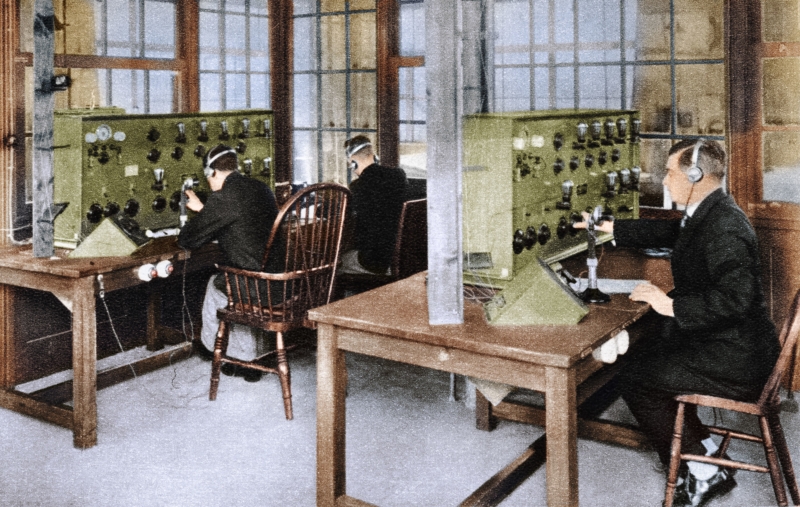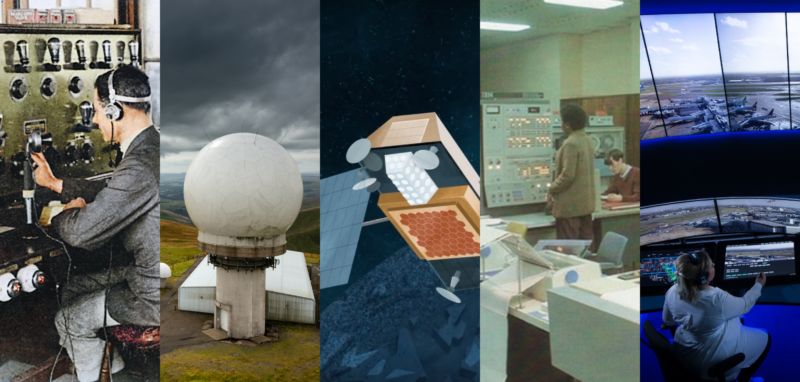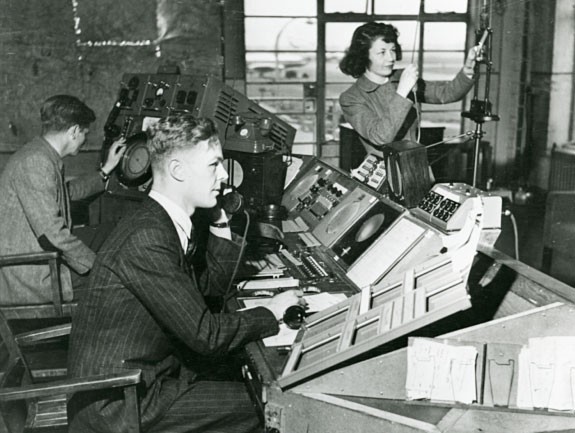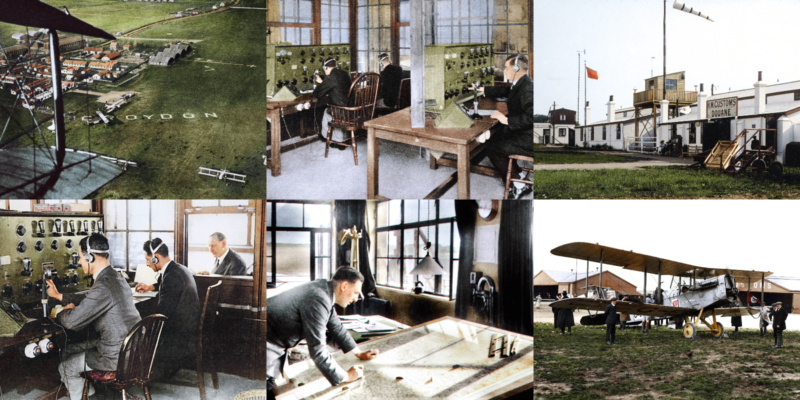Our day to day lives are wholly dependent on radio – from the ones in our homes and cars through to smart phones, GPS positioning, Bluetooth, WiFi and more. Radio has proven to be one of the greatest and most transformative technological developments of the last century.
And quite simply, without radio, the concept of air travel and air traffic control as we know it would not exist.
Whilst radio originated in the 19th Century, it was during the First World War that great strides were made. A team of ex-Marconi employees enlisted by the Royal Flying Corps made the leap from spark-gap radio to continuous wave transmissions – essential for radio telephony speech communications. By the end of the war, the Royal Flying Corps had merged to become the Royal Air Force and the fledgling service had hundreds of two-way, ground-to-air radio equipped aircraft and thousands of radio trained personnel.
As the concept of mass air transport emerged after the war, radio was seen as an essential tool, with all aircraft capable of carrying ten or more people required to carry one. It was understood that this one technological advancement – which could facilitate both real-time dynamic communication and aerial navigation – would underpin the success of this new industry.
The first-generation airliners of 1919 were very different from today’s modern carbon-fibre jet powered aircraft. Propeller driven, piston-powered, wood and canvas aircraft, built with open cockpits and heavy manual controls cruising at around 80 mph, pilots were wholly reliant on visual navigation – using map reading and ground feature identification. Once in the vicinity of an airfield at around 5 km they could, if conditions permitted, see the airfield visual signals providing the landing, wind direction and weather conditions.
But being solely reliant on visual signals meant pilots would traverse the hundreds of miles between two airfields without having any forewarning of weather conditions, hazards or en-route ground support. Radio and the ground-based ‘Radio Officers’ and ‘Civil Aviation Traffic Officers’ who were government appointed to support pilots, filled that significant void and were absolutely transformative in terms of safety.
Beyond communication, the other useful characteristic of radio propagation is that it can be used for navigation. A radio transmission’s source can be traced and identified and the receiving station can, if so equipped, identify the bearing of that transmission.
For the earliest airline pilots, this was incredibly useful as a ground-based controller could relay the bearing information from the ground station to help the pilot fix the aircraft’s position. For the pilot, this removed the need to have a visual ground reference – potentially lifesaving in poor visibility.
Taking this a step further, using two or more ground-receiving stations, the aircraft’s radio transmissions could be used to positively identify and cross fix the aircraft’s position with this information passed onto the pilot. Introduced in 1922, Radio Position Fixing – a kind of proto-radar – was of enormous help to pilots as it gave them an accurate location, reduced their workload and allowed them to concentrate solely on flying the aircraft.
There is no doubt that radio was a game-changer for the first generation of airline pilots. Instead of flying ‘blind’, radio offered pilots the support of a dedicated team of people on the ground tasked with helping them safely reach their destination. It’s a relationship that persists to this day.
Simply put, radio can’t be beat.
This post is part of a series profiling the most influential innovations in the history of Air Traffic Control. Next week will be radar, followed by Flight Data Processing, real-time satellite surveillance and then Digital Towers. You will then get to decide the final winner .
Find out more about the origins of Air Traffic Control at nats.aero/atc100
Comments
Please respect our commenting policy and guidelines when posting on this website.




